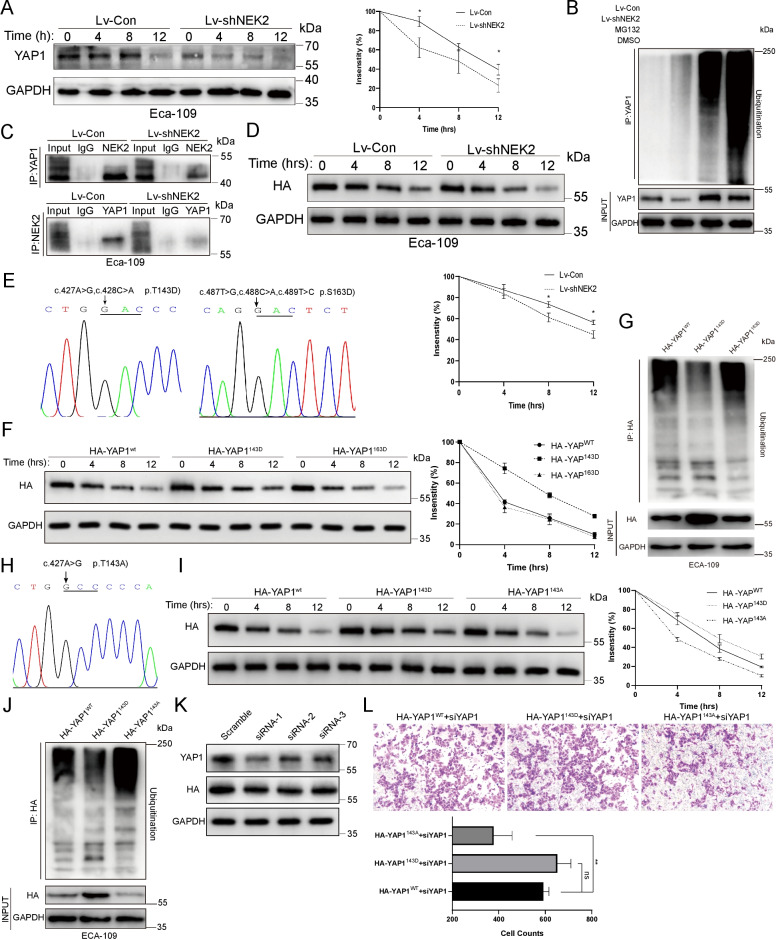Fig. 5.
NEK2 stabilized YAP1 and hindered its ubiquitination by phosphorylating it at Thr-143. A Endogenous YAP1 was subscribed to faster degradation in 12 h treatment of cycloheximide (20 μg/mL) between the Lv-Con and Lv-shNEK2 group. B The YAP1 underwent stronger ubiquitination in the Lv-shNEK2 group, which was more apparent in the presence of pretreatment MG132 (10 μM, 4 h) but still more intensified than that of the Lv-Con group. C NEK2 was pulled down by YAP1 in IP and vice versa, which was weaker in the Lv-shNEK2 group in Eca-109 in vitro. D The stability of Exogenous HA-YAP1 was also declined after knocking down on YAP1. E Sequencing map of mutation of Thr-143 and Ser-163 into Asp-143 and Asp-163, respectively. F The stability of HA-YAP1 was significantly stronger in the HA-YAP1143D group than HA-YAP1WT group and HA-YAP1163D group. G The HA-YAP1143D was less ubiquitinated than HA-YAP1WT and HA-YAP1163D group with pretreatment of MG132 (10 μM, 4 h). H Sequencing map of mutation of Thr-143 into Ala-143. I The HA-YAP1 was subscribed to the fastest degradation when its Thr-143 was mutated into alanine, while the lowest rate was found with the mutation to aspartic acid. J The HA-YAP1143A group presented the most ubiquitinated, with MG132 (10 μM, 4 h) as previous, followed by the HA-YAP1WT group and HA-YAP1143D group. K The 3’-UTR-oriented siRNA was proved efficient to interfere with endogenous YAP but not exogenous YAP1. L The Mutation of Thr-143 into alanine on exogenous YAP1 limited the immigration of ESCC in vitro in the presence of siRNA-1 for endogenous YAP1. All experiments were repeated independently for three times. *P < 0.05, **P < 0.01, ns not significant, IP immunoprecipitation

